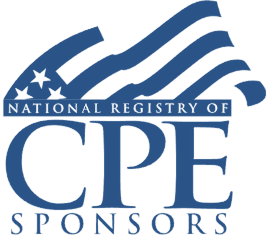Welcome! Save 30% on all CLE, CPE, and Professional Skills webinars, plus 15% off any annual pass with code CYBER2025
About the Course
Introduction
This webinar will walk tax advisers through an IRS examination from its beginnings to its resolution. Our knowledgeable tax attorney will explain the best steps, from receipt of the IRS letter to handling the audit and potentially appealing unreasonable decisions.
Description
Tax practitioners and taxpayers need to understand the steps involved in an IRS examination. From the beginning, a taxpayer could receive a letter explaining there will be a correspondence or in-person audit. Correspondence audits usually cover one or two particular items. In-person audits could be more intense. Taxpayers receiving an IDR (information document request) want to cooperate with the IRS but not divulge unnecessary information.
Tips for audit scheduling might include not holding the inquiry at the taxpayer's abode or business. The IRS may choose to issue third-party summons to acquire the information needed. Once the findings are received, a taxpayer may choose to agree or disagree with the findings and may want to request reconsideration. Knowing the situations that are eligible for appeal and how to appeal an unfavorable determination is necessary for advisers handling these often-encountered tax controversies. From the onset to its resolution, there are steps that tax professionals can take to put their clients in a better position.
Listen as our tax relief expert explains the audit process cradle to grave for tax professionals and taxpayers.
Presented By

Mr. Cothroll has worked for over nine years defending individuals and corporations in IRS audits and collection procedures throughout the country. He has represented everyone from small business owners to truck drivers, construction workers and CEO’s of corporations. Mr. Cothroll has extensive knowledge of the tax laws and regulations as it relates to individual, corporate and employment taxes. He has litigated tax matters before the US Tax Court in Houston, Texas. Mr. Cothroll also does consumer bankruptcy work.
-
BARBRI is a NASBA CPE sponsor and this 110-minute webinar is accredited for 2.0 CPE credits.
-
BARBRI is an IRS-approved continuing education provider offering certified courses for Enrolled Agents (EA) and Tax Return Preparers (RTRP).
Date + Time
- event
Monday, August 19, 2024
- schedule
1:00 p.m. ET./10:00 a.m. PT
- The IRS examination process: introduction
- Understanding taxpayers' rights: Publication 1
- Selection process
- DIF scores
- IRS' targeted tax missteps
- The audit process cradle to grave
- Receiving notice of examination
- Responding to IDRs
- Handling the examination
- Revenue officers
- Income tax examination changes: forms and responses
- Reconsideration, appeal, and mediation
- Collections
The panelist will cover these and other critical issues:
- Proper responses to IDRs
- When a taxpayer should consider appeals or mediation
- Tips for handling an in-person examination
- Collection issues including levies, garnishments, and OICs
Learning Objectives
After completing this course, you will be able to:
- Identify methods IRS can use to collect outstanding debt
- Determine advice for handling an in-person examination
- Decide when a taxpayer should consider appealing an IRS finding
- Ascertain areas the IRS targets for examinations
- Field of Study: Taxes
- Level of Knowledge: Intermediate
- Advance Preparation: None
- Teaching Method: Seminar/Lecture
- Delivery Method: Group-Internet (via computer)
- Attendance Monitoring Method: Attendance is monitored electronically via a participant's PIN and through a series of attendance verification prompts displayed throughout the program
- Prerequisite: Three years+ business or public firm experience preparing complex tax forms and schedules, supervising other preparers or accountants. Specific knowledge and understanding of individual income taxation, including itemized deductions, individual income tax credits, net operating loss limitations including carrybacks and carryforwards.

BARBRI, Inc. is registered with the National Association of State Boards of Accountancy (NASBA) as a sponsor of continuing professional education on the National Registry of CPE Sponsors. State boards of Accountancy have final authority on the acceptance of individual courses for CPE Credits. Complaints regarding registered sponsons may be submitted to NASBA through its website: www.nasbaregistry.org.

BARBRI is an IRS-approved continuing education provider offering certified courses for Enrolled Agents (EA) and Tax Return Preparers (RTRP).

BARBRI CE webinars-powered by Barbri-are backed by our 100% unconditional money-back guarantee: If you are not satisfied with any of our products, simply let us know and get a full refund. Contact us at 1-800-926-7926 .
Unlimited access to premium CLE courses:
- Annual access
- Available live and on-demand
- Best for attorneys and legal professionals
Unlimited access to premium CPE courses.:
- Annual access
- Available live and on-demand
- Best for CPAs and tax professionals
Unlimited access to premium CLE, CPE, Professional Skills and Practice-Ready courses.:
- Annual access
- Available live and on-demand
- Best for legal, accounting, and tax professionals
Unlimited access to Professional Skills and Practice-Ready courses:
- Annual access
- Available on-demand
- Best for new attorneys
Related Courses

Deducting Trust and Estate Charitable Donations: Trust Provisions and Wills, Recent Court Cases, Reporting Issues
Thursday, January 22, 2026
1:00 p.m. ET./10:00 a.m. PT

Tax Research Techniques: Internet Tools, AI Caveats, Methodology, Documentation and Communication of Results
Wednesday, January 21, 2026
1:00 p.m. ET./10:00 a.m. PT

Recent IRS S Corporation Initiative: Losses in Excess of Basis, Taxable Distributions, Handling the Examination
Friday, January 16, 2026
1:00 p.m. ET./10:00 a.m. PT

Family Office Tax Update: Foundational Principles and Emerging Issues
Available On-Demand
Recommended Resources

How CPE Can Bridge the Gap Between What You Know and What You Need to Know
- Career Advancement


